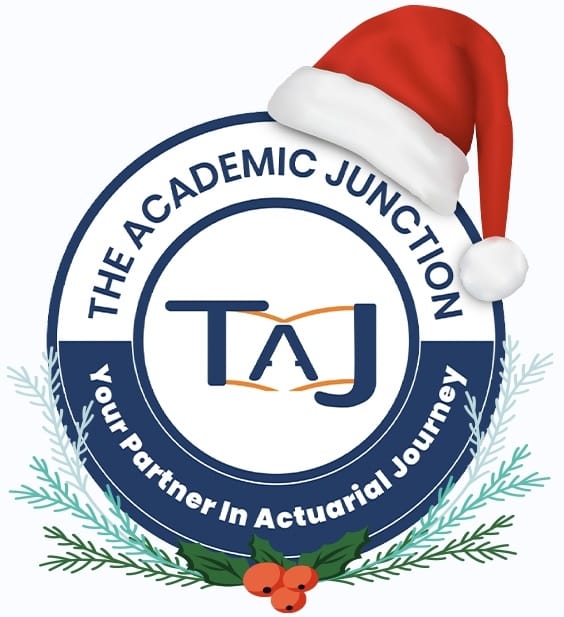Definitive Guide to CS1- Actuarial Statistics

Tables of Content
1. Introduction
2. Topics under CS1
3. CS 1 Exam Pattern
4. Steps to Appear in CS1 Exam
5. Topic Wise Weightage
6. Conclusion
7. FAQ
Introduction
CS1 (Actuarial Statistics) was known as CT3(Probability and Mathematical Statistics) before the new curriculum(2019) of IAI and IFoA was introduced.
The CS1 paper provides a strong base in mathematical and statistical techniques that are of particular relevance to Actuarial work.This particular paper equips the students with ample knowledge of statistical distribution and various fundamental concepts of statistics. So, any student who aspires to sit for the Actuarial Science statistics exam, should pay more attention towards various details of the CS1 paper(Actuarial Science Statistics). This paper also requires skills like appropriate formula application, theorems, and problem solving statistical tests.
Listen below is a list of all the topics that come under the CS1 paper of Actuarial Science Statistics exam.
Topics Covered under CS 1
1.Probability Distributions- Application and ways to find the probability density functions in Actuarial Science Statistics. This topic defines and explains the key characteristics of the discrete distributions which are geometric, binomial, negative binomial, hypergeometric, Poisson and uniform on a finite set.
2.Generating Functions- Finding moment generating functions for different random variables. Joint distributions and Central Limit Theorem Application.
3.Sampling and Hypothesis Testing- Usage of various statistical tests such as T test, in different situations.
5.Linear Regression- This topic explains what is meant by response and explanatory variables.It also states the simple regression model (with a single explanatory variable). Students get to learn various methods to derive the least square estimates of the slope and intercept parameters in a simple linear regression model. Students get to use appropriate software to fit a simple linear regression model to a data set and interpret the output,i.e- perform statistical inference on the slope parameter. Describe the use of measures of goodness of fit of a linear regression model.
6.Bayesian Statistics- Most students get confused while understanding the actual meaning of this topic. Under this topic, the students learn the fundamental concepts of Bayesian statistics and use these concepts to calculate Bayesian estimators. They Use Bayes’ theorem to calculate simple conditional probabilities and explain what is meant by a prior distribution, a posterior distribution and a conjugate prior distribution.
Many more topics that test your Knowledge in the Actuarial Science Statistics Paper:
7. Conditional Expectations
8. Multiple Linear Regression
9. Central Limit Theorem
10. Generalized Linear Models
11. Point Estimation
12. Credibility Theory
13. Confidence Intervals
14. Empirical Bayes Credibility Theory
CS1 Exam Pattern
IAI and IFoA conduct the CS1 paper of Actuarial Science statistics, in two parts, namely- Theory part and practical part. Candidates have to score passing marks in both the parts, in order to pass the Actuarial Science Statistics exam.
| Details | CS1 Theory Exam | CS1 Practical Exam |
| Duration | 3 hours 15 minutes | 1 hour 45 minutes-CBT Exam |
| Skills tested | Skill of formula application to solve problems | Knowledge of “R” language and application of theory in R |
| Passing Marks | 100 Marks exam with 70% weightage in total score | 100 marks exam with 30% weightage in total score |
The new curriculum of CS1 paper that includes topics related to Actuarial Science statistics, is different from the old curriculum in several different ways. The new curriculum has addition of R in the paper along with a few more topics like Bayesian statistics, Measures of Correlation, Generalized linear Regressions, etc. Topics like Compound distributions and ANOVA have been excluded from the new curriculum. The new curriculum of Actuarial Science Statistics leans a bit more towards practical application of concepts to solve problems.
Steps to appear for the CS1 Exam:
- Students having membership of IFoA can appear for CS1 exam of Actuarial Science Statistics, from the same institute.
- Visit the IFoA Portal and submit the application form online.
- Book the CS1 exam for the upcoming exam sitting once your application has been reviewed and cleared.
- At a reduced rate, candidates have to pay GBP 180.00 for the CS1 Actuarial Science Statistics exam booking, as fee from IFoA.
- Keep a track of the student membership criterias because IFoA keeps changing them.
Topic Wise Weightage
| Sr. No. | TOPICS | WEIGHTAGE |
| 1. | Random Variables and Distributions | 20% |
| 2. | Data Analysis | 10% |
| 3. | Statistical Inference | 25% |
| 4. | Regression theory and applications | 30% |
| 5. | Bayesian Statistics | 15% |
These weightings are indicative of the approximate balance of the assessment of this subject between the main syllabus topics, averaged over a number of examination sessions of Actuarial Science Statistics. The weightings also have a correspondence with the amount of learning material underlying each syllabus topic. However, this will also reflect aspects such as the relative complexity of each topic and hence the amount of explanation and support required for it. Students need to have a thorough foundation understanding on which to build the other objectives and the extent of prior knowledge that is expected, meaning that they have to set their priorities accordingly!
CONCLUSION
The CS1 paper, that deals with Actuarial Science Statistics, is both theory and practical based and this is the main reason why students should first go through the core reading material for this exam. The aspirants need to solve all examples and back exercise questions. Then students can practice the previous year question papers and sample papers for a better understanding of the question pattern. As this paper mainly deals with Actuarial science statistics, students with better skills in problem solving and mathematical reasoning might find this paper comparatively easier than the other papers.
FAQ
Actuarial Science uses mathematics & statistics concepts to identify, analyze & solve the financial implication for unexpected future events.
Yes, they use statistics to identify & analyze the uncertainty in financial & insurance sector.
Clearing exam on your own is difficult its better to join coaching for actuarial science statistics.
CS 1 has 2 parts, 200 hours of combined study is required.
- Random variables & distributions
- Data Analysis
- Statistical Inference
- Regression Theory & Applications
- Bayesian Statistics




